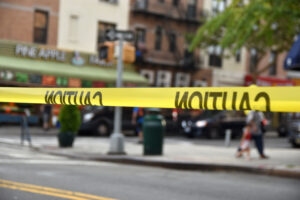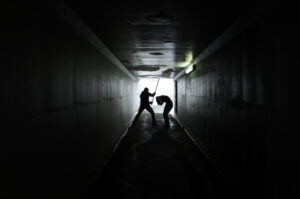The Nobi Region north of Nagoya, Japan, was hit with an earthquake of magnitude 8. The earthquake was felt all over the island of Honshu as many buildings came down and 7,000 lost their lives.
On October 28, 1891, The Nobi region of Japan, a rich agricultural area north of Nagoya, experienced an earthquake of magnitude 8. It rocked the main island of Honshu all the way from Tokyo to Osaka. Iron bridges and brick walls of buildings came tumbling down, about 7,000 people lost their lives, tens of thousands were injured, and 100,000 became homeless. Most of the destruction was in the smaller towns and agricultural hamlets. Gifu, the provincial capital of Nobi, and Ogaki, both large towns, were completely destroyed. They were very close to the epicenter. Extensive fires broke out in the city of Nagoya because pipelines and communications had been broken.
Earthquakes are familiar to the people of Japan. School drills in preparation for the next one are a regular feature of life as are also the positive, creative responses of people in all walks of life to an earthquake. Nevertheless, there are times when one arrives at critical moments in the nation’s history. Old-standing attitudes appear at such times and the earthquake is explained in terms of political events or the choices made by leaders. In 1891, Japan, like the rest of the world, knew little about how earthquakes happen. It was prior to the 1991 event that Japan had come through two revolutionary changes: the Meiji Restoration, the restoring of imperial rule and moving the capital from Kyoto to Tokyo and, secondly, the establishment of new strong ties with the Western World. There was a determination to make use of the expertise of countries like the United States and Britain in order to create a modern economy and society. Students were sent to Europe and the United States to study modern science and technology, while foreign experts were hired to help in the design of factories and educational institutions. Many Japanese suggested that the quake was punishment for bad choices like these.
These thoughts about the cause of the 1891 event became evident as the details of damages were publicized. For example, news of what happened in Osaka, Nagoya, and Kobe was known before anyone was aware of the damage to rural areas. In these big cities many buildings were constructed of brick. Two large textile mills, built of brick, had collapsed in Nagoya and Osaka and the supports of a western-style steel railway bridge had given way. One newspaper focused on these details, adding that although Osaka had been severely shaken almost all of its Japanese-style houses survived. The editor concluded that it was because of their wood construction that the Japanese houses had survived. Conversely, other buildings had collapsed because they were made of brick. The newspaper went on to affirm that all the foreign-built factories were more or less destroyed. When the reports from the rural areas came in it was clear that tens of thousands of Japanese wooden homes had collapsed and burned. However, by that time, a picture had emerged of a failed, foreign, type of building, a view that persisted as Japan sought to come to terms with its new relationships with foreigners.






















